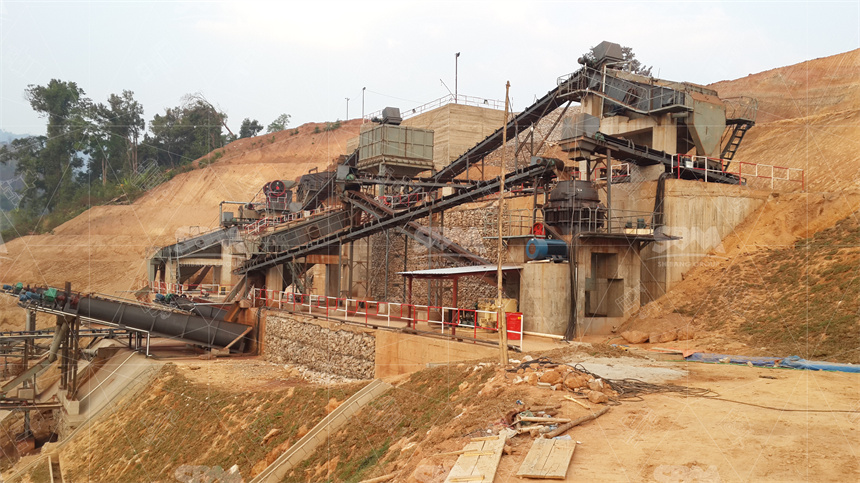Abstract — This short, practical guide explains which crusher types work best on hard gold ore. It covers definitions, working principles, key technical parameters, equipment lists, on-site experience and final selection advice. The data below is taken from manufacturer product pages and technical manuals; figures are given to help engineers choose confidently.

Hard gold ore typically means competent, abrasive host rock with Mohs hardness above 6.5, often with quartz veins, sulfide minerals and variable moisture. Such ores demand compression-type primary crushing and robust secondary crushers. The goal: liberate gold-bearing particles while minimising over-grind and iron contamination.
Principle: single- or double-toggle jaw plate compresses feed against a fixed plate; the movable jaw reciprocates to break rock. Jaw crushers accept the largest feed sizes and serve as the primary stage.
Key parameters to check: maximum feed size; discharge opening range (CSS/OSS); crushing ratio; motor power; eccentric shaft speed; chamber geometry. Typical ranges used in industry: max feed to 1,200 mm; discharge 10–350 mm; capacity 1–1,590 t/h (model dependent). :contentReference[oaicite:0]{index=0}
Why choose jaw first? Jaw machines handle big lumps reliably. They reduce risk of choke feeding, and they give a predictable feed to downstream cone mills. For very hard, abrasive ores use manganese-steel jaw plates and schedule frequent wear checks. :contentReference[oaicite:1]{index=1}
Principle: cone and gyratory crushers compress material between a mantle and a concave. They are high-efficiency compression crushers. They give narrow product size distribution and withstand hard, abrasive ores.
Important parameters: crushing chamber type (standard, medium, short head), closed side setting (CSS), stroke, rpm, and motor sizing. Typical performance window: feed ≤450 mm; capacities 25–2,181 t/h; product sizes 3–64 mm for hydraulic/cone variants. For high throughput, fully hydraulic cone models deliver 30–60% higher output than older spring designs. :contentReference[oaicite:2]{index=2}
Impact-type crushers fracture rock by high-speed impact. For hard, highly abrasive gold ore this increases wear and yields cubical fines rather than desirable liberation sizes. Use impact only for softer, non-abrasive ores. :contentReference[oaicite:3]{index=3}
Most reliable configuration for hard gold ore (typical):
This lineup balances feed handling, wear life and product control. It also supports flotation or gravity recovery downstream. :contentReference[oaicite:4]{index=4}
Use this compact table to compare jaw vs cone for primary and secondary duties.
| Type | Max feed (mm) | Capacity (t/h) |
|---|---|---|
| Jaw crusher | ≤1200 | ~1–1,590 |
| Cone crusher | ≤450 | ~25–2,181 |
When you review a supplier sheet, check and verify these items precisely: crushing chamber profile, CSS/OSS adjustable range, rated motor power (kW), rotor or eccentric speed (rpm), optimum crushing ratio, and recommended liner materials. Also confirm test curves for throughput versus closed side setting. These numbers predict energy use and output. :contentReference[oaicite:5]{index=5}
Wear: hard quartz and sulfides accelerate wear. Expect jaw plate and mantle replacement intervals to be measured in weeks to months depending on tonnage and abrasivity. Energy: compression crushers are more energy efficient than high-speed impact for hard rock. Maintenance: design for easy access to bearings, quick liner change and good lubrication monitoring. Practical maintenance reduces unplanned downtime. :contentReference[oaicite:6]{index=6}
On a desert hard-ore project I managed, feed oversize reached 900 mm. We used a heavy-duty jaw primary then a medium cavity cone. The plant ran at steady 420 t/h. Wear life on jaw plates was 45 days under high silica feed. Cone liners lasted ~60 days. Planned liner swaps and a local spare kit cut downtime to under 8 hours per swap. These figures align with published machine ranges and field tests. :contentReference[oaicite:7]{index=7}
1) If feed lumps >700 mm → start with heavy jaw primary.
2) If target product >40 mm → single stage jaw may suffice.
3) For 3–40 mm product with hard ore → jaw + cone (medium → short head) combo.
4) If ore is soft/non-abrasive → impact may be considered.
For hard, abrasive gold ore the safest, most effective choice is a compression crushing train: robust jaw primary followed by one or two stages of cone crushing. This train gives stable throughput, controlled product gradation, and acceptable wear life when using proper liners and maintenance regimes. Select machine models whose published feed size, CSS range and capacity match your design tonnage. Always validate with supplier test curves and on-site trial feeds before final purchase. :contentReference[oaicite:8]{index=8}
::contentReference[oaicite:9]{index=9}
Whatsapp:+8617329420102
Email: [email protected]
Address: No. 1688, Gaoke East Road, Pudong new district, Shanghai, China.
Online Service : Get Price
We value your feedback! Please complete the form below so that we can tailor our services to your specific needs.
